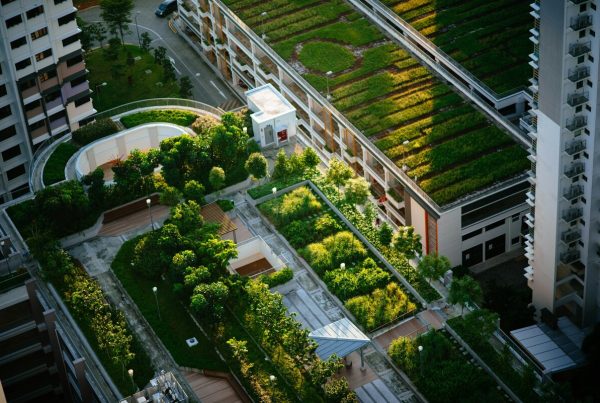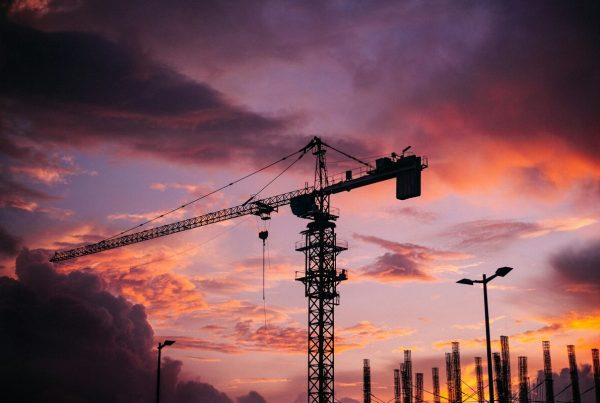The conversation surrounding sustainability has gone global: consumers everywhere are making small but impactful lifestyle changes to reduce waste, slow climate change, and protect the natural environment and its species for posterity.
However, time is short, which means that holding wealthy multinationals accountable for their ecological footprints is one of our greatest challenges currently. Governments and laws can be a force for positive change and citizen empowerment. Knowing this, some elected representatives are exploring the possibilities of using new, industry-specific regulations to inspire a broader shift in the global economy.
The Fashion Sustainability Act – introduced in New York State in January 2022 and anticipated for a vote in late spring – is likely to have a large impact on the fashion sector and the industries surrounding it.
What does this have to do with construction? Even if it might not directly impact the building industry, there is some likely crossover. Here’s what people need to know about the Fashion Sustainability Act and its potential influence on construction.
What Is the Fashion Sustainability Act?
The main intent of this bill is to push for greater transparency and accountability across the fashion industry. The focus is on the sector’s impact on the planet and its resources.
Specifically, in the state of New York, the Fashion Sustainability Act would mandate that companies maintain environmental transparency of 50% or more of their supply chains, from material sourcing to logistics and shipping.
Assemblywoman Dr. Anna Kelles and State Sen. Alessandra Biaggi introduced Assembly Bill S7428/A8352 alongside support from environmental nonprofits and fashion organizations focused on sustainability. The bill would require a much more thorough mapping of supply chains and impacts, and it raises the standards for due diligence disclosure measures.
The bill was presented on Jan. 7, 2022, and now sits in committee. A late-spring vote is anticipated.
What Are the Regulations?
Although the bill isn’t officially scheduled for a vote yet, it’s important to investigate the proposed regulations. The scientific community’s alarm about the precarious position of the natural environment grows by the day. Plus, companies within the fashion industry can prepare themselves for success by learning early how social and fiscal expectations may change.
One of the primary provisions within this legislation requires brands to disclose their greenhouse gas emissions, as well as their energy, water, material and plastic usage, plus chemical management processes. The key factor is that this applies throughout the entire supply chain.
The Direct Impact on Construction
One of the primary reasons the Fashion Sustainability Act would impact construction is through the direct requirement to disclose the impacts of greenhouse gas emissions, water footprints and chemical use throughout the supply chain. Technically, it would require brands to disclose and map at least 50% of supply chain claims. However, it neither specifies which 50% nor in which areas this must be done.
This means brands are encouraged to focus on areas with greater social and environmental risks. Any construction or renovation that takes place within any of these companies can be subject to evaluation under these guidelines. However, this can be a bit tricky, as these standards are being set with textile production in mind, not construction. Where’s the overlap?
A Trickle-Down Effect
Although this act does not explicitly name the construction sector, it has principles that will likely disseminate throughout other industries due to proximity and dependence – including construction and renovation.
In an interview with Vogue, Maxine Bédat – who founded the New Standard Institute – said that legislators are drawing from existing precedent here. She says the Fashion Sustainability Act is “using a model that California has used in the automotive space to drive industry improvements globally.” A similar expanding sphere of influence is likely to form within the clothing industry if this legislation passes.
When environmentalists raise the alarm about the fashion industry, it is often because of the enormous planetary footprint of the garments themselves, thanks to fast-moving textile and clothing trends and the resulting waste. The entire textile industry churns out around 13 million tons of manufacturing waste every calendar year. McKinsey estimates that the climate change impact sits at about 2.1 billion tons of greenhouse gas emissions per year. That’s the same size as the combined economies of the U.K., Germany and France.
The supply chain mapping required under this new legislation would force fashion companies to pay greater attention to the built environment that supports garment-making. That includes everything from farmland to factory floors, warehouses and distribution centers.
Raising the bar on reporting and mapping requirements within the fashion industry will almost certainly bring greater attention to the energy efficiency and material waste of the physical environments clothing manufacturers and consumers rely on. Forcing visibility of even half the fashion industry’s supply chains could cause a ripple effect throughout construction due to the intensifying focus on the buildings that support fashion worldwide – one of the world’s largest and most impactful industries by any measure.
By reporting 50% of supply chain activities and shifting to greener industries in general, plenty of sustainable trends are likely to make their way into the construction industry within the next few years.
Techniques like recycling construction waste, deploying renewable energy systems and creating green spaces within new construction can be folded into this ongoing mission.
Ideally, as fashion is forced to change, so too will construction techniques and priorities. Legislative efforts like this should continue to investigate and provoke positive changes in places where one industry abuts another, and where the exchange of environmental harm for expedience may be underexplored.
Construction’s History With Green Practices
https://unsplash.com/photos/nXJyZLBnyUQ
One thing that’s important to dissect is the construction industry’s history with green practices and building. Like fashion, construction has an outsized environmental footprint – around 569 million tons of waste produced annually.
Even though recent years have seen a push for greener habits, recycling and other forms of sustainability, it hasn’t always been this way. The construction industry has historically caused widespread environmental impacts, especially when it comes to land occupation, ecosystem degradation and species displacement.
Whether buildings already exist and require renovations or companies are breaking new ground on a bespoke structure, it’s possible to redesign or build anew in ways that emphasize resource conservation and long-term sustainability.
It’s only been within the past decade or so that solutions like green energy and recyclable materials have made their way into construction at scale. What’s also important to note is that these practices often happen at the client’s request and not always as a direct result of public policy.
An expansion of these principles will need to come from clients, from within the construction industry itself and from forward-thinking legislators simultaneously. Movements to make transportation and fashion greener will spill into construction and beyond in positive ways – some anticipated and some yet unforeseen.
There are already examples of garment and textile facilities – like the Star Innovation Center in Sri Lanka – that are leading by example where sustainability is concerned. By retrofitting an abandoned commercial facility to take advantage of passive cooling, builders can reduce energy consumption — if the Star Innovation building is any indication — by 70% in some cases.
These environmental and cost savings benefit everybody downstream in the fashion and textile industries – and it’s thanks to simply leveraging simple scientific principles during the building or retrofit phase.
Software for Compliance and Peace of Mind
You may be wondering how construction teams and projects can stay compliant with emerging regulations and up to date on a building’s performance. Building management systems (BMS) may be an investment worth making.
BMS, also called building automation systems, is a marriage of Internet of Things (IoT) hardware and software intended to monitor a range of important metrics throughout a building’s life. These include:
- Primary and backup power systems
- Lighting
- Climate control, air quality and ventilation
- Current and historical energy usage
- Security cameras and other assets
Building management systems combine oversight of mechanical and electrical networks into a unified and accessible dashboard.
Bee Sense is a preeminent example of a BMS suite that emphasizes compliance with major green certifications like Arc, LEED and WELL. Building occupants and managers can use the software to drill down into tons of sustainability- and health-focused variables that often go unnoticed, such as:
- The presence of formaldehyde, ozone, VOCs and other harmful chemicals
- Light quality and noise levels
- Building traffic and absenteeism
Most importantly, Bee Sense delivers insights, trends and actionable analysis. If a building system falls out of compliant operation or becomes inefficient, it won’t escape the notice of a properly outfitted BMS.
A Sustainable Web of Industries
Even though the Fashion Sustainability Act is slightly removed from the construction industry, it’s still sparking a broader conversation. It will require a combination of direct legislation and more widely available sustainable technologies to permanently shift the construction industry to sustainable practices.
What would it mean if the building sector became a more sustainable one overall? Fashion and every other industry would benefit in turn. Although sustainability looks different everywhere, a few fundamental principles are emerging in construction that builders can begin learning about and investing in today to support greener living.
Practices like utilizing green energy and passive cooling, using reclaimed and recycled materials, and building structures designed to be sustainable throughout their existence are all ripe for wider deployment within the construction industry of tomorrow.











